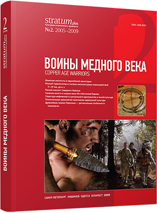Погребая в сосуде: происхождение раннего погребения в урне в Юго-Восточной Европе
Burying in a vessel: the origins of early jar burial in southeast Europe
Author(s): Krum BăchvarovSubject(s): History, Archaeology, Ancient World
Published by: Издательский дом Stratum, Университет «Высшая антропологическая школа»
Keywords: southeast European neolithization; Neolithic core area; Struma; Vardar river;
Summary/Abstract: Appearing in the early – although probably not the earliest – phases of southeast European neolithization, jar burial developed in several territorially and chronologically restricted “waves”: Neolithic core area in the Struma and Vardar river valleys and the west Rhodope Mountains in the beginning of the VI millennium BC, and later, late/final Neolithic, Chalcolithic, and/or early Bronze Age – depending on local terminology – examples scattered from Argolis in Greece to the Great Hungarian Plain and dating from the second half of the 6th to the III millennium BC, with huge chronological gaps within. However, their central Anatolian and Levantine parallels give a solid base for the expanding of our understanding of this obviously cross-cultural phenomenon.
Journal: Stratum plus. Археология и культурная антропология
- Issue Year: 2009
- Issue No: 2
- Page Range: 315-324
- Page Count: 10
- Language: Russian
- Content File-PDF

